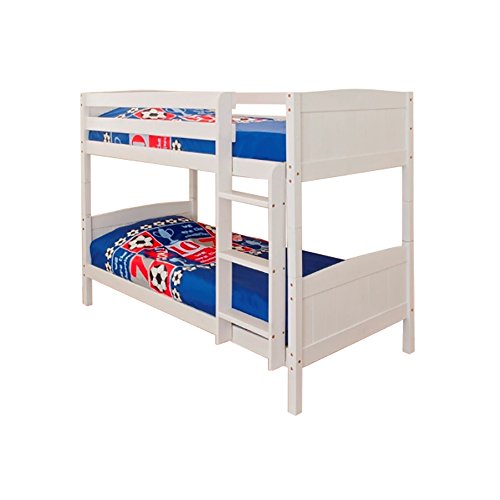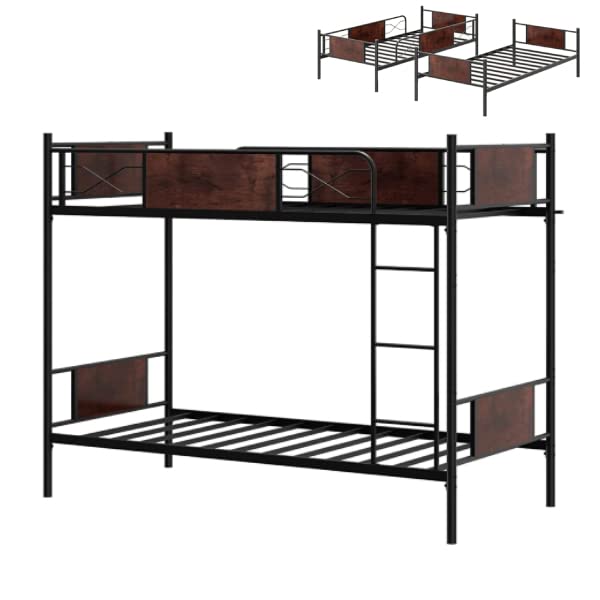상품홍보 Bunk Bed And Single Bed Tools To Improve Your Daily Life Bunk Bed And …
페이지 정보

본문
 Choosing Between a Bunk Bed and Single Bed
Choosing Between a Bunk Bed and Single BedIt is essential to consider the size of the mattress when deciding between a bunk bed and a single bed. Twin mattresses are ideal for adults and children who sleep alone. They are best suited to rooms measuring 7 feet by 10 inches.
A full-sized twin over a twin bed is ideal for families with children of different age groups. The futon bunk is another popular option. It includes an lower Western style futon that can be transformed into a bed.
Space Saving
Bunk beds are a great solution for families seeking to maximize their living space. This kind of furniture allows families to fit two beds into the same space, thus making space that could be used for other furniture, such as dressers or desks.
Bunked beds are a popular option for kids' rooms because they can create more playroom and study spaces while also allowing for more space in smaller living spaces. They can also be an excellent alternative to single bed frames for adults. Bunkbed owners who are knowledgeable can add accessories and decor to their beds that will make them feel more like a home.
The main benefit of bunk beds is that they allow children to share rooms and sleep in the same room with each other. This arrangement can reduce conflict over sharing a bedroom and increase overall cohesion in the household. It also increases the amount of storage space in the child's bedroom by removing the need for extra dressers and other large pieces of furniture.
There are many different types of bunk beds, however they all have the same design to maximize space. Standard bunk beds feature two mattresses of the same size stacked on top of each other. A full-size twin bed is set up in the same way however, with two beds of full size on the bottom and a twin-size mattress on top. A futon bunk is a normal bunk bed, paired with an Western-style futon couch that transforms into a sofa, is also an ideal choice for families looking for an elegant, space-saving bunk bed.
Although bunk beds are a cheaper option than single beds, they could require regular maintenance and repairs because of their multi-tier structure. Bunk beds may also be less accessible to those with mobility problems or those at risk of falling than single beds. When choosing the bedding for their facility healthcare facilities must balance the initial cost and the long-term value.
Single beds are less expensive to maintain than bunk beds, and their simple design makes them easier to clean and repair. They can also be moved to meet the needs of patients or accommodate changes to room layouts. This flexibility is especially beneficial for behavioral health facilities which have to accommodate patients of diverse demographics.
Convenience
bunk bed mattress single beds are an ideal solution for families with children of different age groups. A full bunk over a twin arrangement is great for siblings who have different preferences in sleeping. For example, younger children may prefer being close to mom and dad while older kids may enjoy sleeping on their own.
In addition, bunk beds could help save money by reducing number of mattresses required to purchase. Certain bunk beds come with a built-in storage system that eliminates the requirement for separate dressers in patient rooms which can help reduce clutter and maximize space.
Bunk beds also can help improve the bed capacity of a facility. They are ideal for cramped rooms, such as rehabilitation centers and youth psychiatric units, where patients typically share rooms. They can also be used to accommodate large groups of patients in long-term care facilities.
While bunk beds can provide many benefits, they can also be more difficult to maintain and clean than single beds. The added stress on joints and frames can result in more wear and tear. This will require more frequent inspections and regular maintenance. The design of the bunk bed can cause difficulties for those with mobility issues or health conditions. The climb up and down the ladder could be challenging and even dangerous especially for older people.
Single beds are, however can be moved around to suit different room layouts and give patients a more personal environment. Journal of Environmental Psychology states that this flexibility improves the satisfaction of patients by 25 percent.
When choosing the right type of bed for your facility, think about the demographics of your patients as well as space limitations and maintenance requirements. Bunk beds can be an ideal option for facilities that want to save space or require less set-up time. Single beds are also ideal for rooms with a high turnover or low budgets.
If you're thinking about a bunk bed, be sure to select a bed single bunk that has a clean mattress. The best mattresses for bunk beds are latex, innerspring memory foam, or hybrid. However, some individuals prefer a futon. When purchasing a bunk bed, check to see if the mattress is upholstered or slatted. A slatted bunk bed has a base of slats, or slat rolls that are hammered or screwed together to support the mattress.
Safety
When it comes to furnishing a health care facility, safety of the bed is an important factor to take into consideration. Bunk beds can help create an environment that is safe, by maximising space and minimizing risks. They can also lower injury risks because they have lower centers of gravity, which is beneficial for those who are elderly and physically challenged.
The key to bunk bed safety is a proper assembly and regular maintenance. Check for any weak or unstable parts and strengthen any weak spots to avoid structural failure. Adhere to manufacturer-recommended weight limits, as excess loading can compromise stability. To prevent entrapment or falling make sure ladders are securely attached to the frame.
Children should be allowed to sleep on the top bunk only after demonstrating their ability to safely climb up and down. They should also be able to handle their personal hygiene without assistance or supervision, for instance, using the restroom and getting dressed. Additionally, bunk beds should be placed far enough from windows to limit the chance of injuries that result from window access.
One disadvantage of bunk beds is their ineffective movement and noise isolation which can be a problem for sleepers with light sleepers. Those sleeping on the bottom bunk may feel their counterparts moving and turning in their beds, or hear them coming up and down at night.
Single beds, however, provide better sound and motion isolation. They also offer the ability to accommodate a wide variety of demographics for patients and room sizes.
Choosing between bunk beds and single bunk with desk beds depends on a facility's requirements and budget. A bunk bed is an affordable option for healthcare facilities with limited space and a high patient turnover rate, while single beds are ideal for long-term care facilities and rehabilitation centers with consistent populations. In the end, it is crucial to weigh the initial cost against long-term value, while focusing on the patient's safety and comfort. All beds require regular inspections as well as timely maintenance, regardless of nature. The Facilities Management Journal reports that proactive maintenance can reduce repair costs by up to 15%.
Functionality
In addition to the obvious space-saving benefits In addition, bunk beds create a sense of community between friends or siblings sharing the same space. They are ideal for families with children of different ages or multiple children who want to share a room and they also work well in rehabilitation facilities or youth psychiatric units in which patients are required to sleep in a group setting.
Bunk beds are available in a variety of configurations and some even have built-in storage. Twin over full bunks are popular and typically feature one twin mattress on the bottom with an additional double mattress on top, which is ideal for families with children who are different in age or for adults who prefer to share an extra bed with their spouse or friend. L-shaped bunks are also a more stylish alternative to the classic bunk layout with the lower section of the unit containing the futon, which can be used as a couch or rearranged to provide the double bed.
While bunk beds save on space, they will require more maintenance than single bunk beds due to their multi-tiered design. This can include frequent repairs and regular inspections to ensure safety as reported by the Facilities Management Journal. Single beds are cheaper and easier to maintain.
Another factor to consider when selecting bunk beds is that they tend to provide less privacy than single beds because guests share their space with others. This can be challenging for some people, especially in shared housing settings such as rehabilitation centers or transitional housing.
 Single beds and bunk beds can be customized with additional features like desks and storage to create an ideal sleeping environment. This is especially beneficial in small rooms that need to maximize the use of space because they help eliminate clutter and make room to accommodate other furniture or other activities. Some bunk beds can even be divided into two single beds which allows them to grow with the child and continue providing comfort into adulthood.
Single beds and bunk beds can be customized with additional features like desks and storage to create an ideal sleeping environment. This is especially beneficial in small rooms that need to maximize the use of space because they help eliminate clutter and make room to accommodate other furniture or other activities. Some bunk beds can even be divided into two single beds which allows them to grow with the child and continue providing comfort into adulthood.- 이전글What Is Toto And Why Is Everyone Talking About It? 24.11.02
- 다음글An Easy-To-Follow Guide To Choosing Your Toto Website Official 24.11.02
댓글목록
등록된 댓글이 없습니다.
